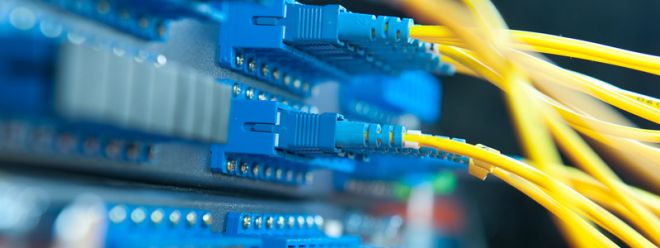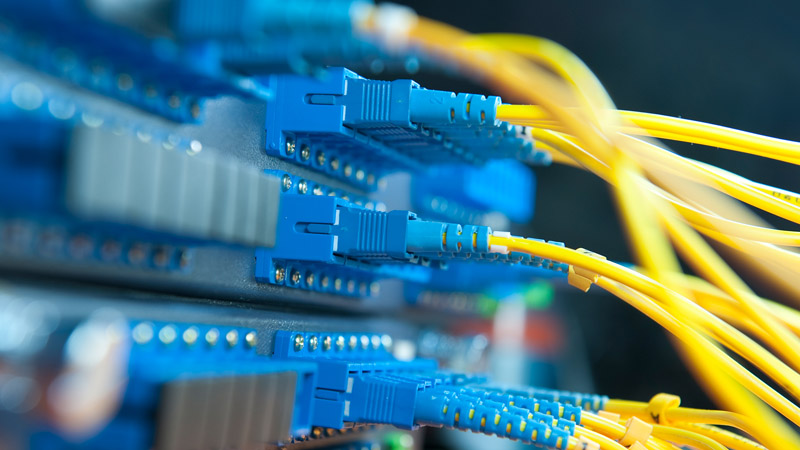One fiber, many conversions

One fiber, many conversions

We all marvel at the power and speed of light in our lives. Literally, it is light that allows all of us to see and perceive the space around us. It is also a refuge from darkness, thus paving the way for a modern, bright world.
But what happens when light is passed through a bundle of glass, known as an optical fiber?
This is because of another important property of light that makes it an enabler of technology, innovation and the future of our planet. Through the power of fiber optics, light can carry information from one corner of the world to another. This makes optical fibers, which carry information in the form of light, the basis of an increasingly interconnected world.
To say that fiber optics revolutionized the telecommunications world would be an understatement. Due to its many transformations and forms, fiber optic infrastructure and technology is the best choice to start Industry 4.0 and beyond. This means a smarter, more connected, more flexible and more efficient world.
In fact, fiber-optic communications continue to change the way we communicate, treat disease, drive cars, and even maintain homeland security. Fiber optics are a critical component of advanced connectivity infrastructure and are expected to have an impact of $1.2 to $2 trillion on global GDP. This staggering figure represents the impact on just four industries: automotive and assembly, healthcare systems and services, aerospace and defense, and retail. Imagine the cumulative impact across industries!
This article will shed light on how optical fiber, in its many forms, is transforming not only communications, but a variety of other key industries that are increasingly digitally connected and intelligent.
Fiber Optics Enable Seamless Communication
Fiber optic communications allow us to stay in touch with the world no matter where we are. It has replaced traditional copper cables as the backbone of the internet.
The growth in fiber is mainly due to the fact that fiber-based fixed broadband is currently the most reliable technology, capable of delivering the speed and capacity that governments, businesses and consumers expect. Modern fiber optics offer exponentially higher throughput, lower latency, and are significantly more cost-effective than widely used copper cables.
Coupled with a fiber optic infrastructure that is always in a state of network upgrades, we have a powerful tool in our hands to revolutionize major industries. This is due to the incremental upgrade of fiber optics further enhanced by many parallel innovations in communication technology, such as:
- 10G Passive Optical Network
- Wi-Fi 6 – 40% faster than previous WiFi generation
- Terabit Ethernet transfer speeds up to 400 Gbps
- Next Generation Flexible Optical Service Unit - Differential Bandwidth Allocation and Multiple Service Channels
So, what was the result? Improved video conferencing, faster downloads and uploads of large files, and near-instant HD content streaming. In the larger context, it is key to building smart cities, converged data centers, connected cars, smart manufacturing, and more.
Optical Fiber Application Medical Industry
Fiber optics have also had a major impact on the medical industry. In fact, the medical fiber optics industry is expected to be worth $1 billion by 2024.
Medical devices that use fiber optics, such as endoscopes and laparoscopes, make procedures less invasive and less painful for patients. These devices use thin, flexible fibers to transmit light and images in real time, allowing doctors to operate through small incisions. This results in quicker recovery times for patients and less scarring. The deep fiber optic connection also supports advanced applications such as telemedicine and remote surgery due to reduced latency and higher quality live video streaming.
Furthermore, optical fibers are central to the development of new and innovative sensors compatible with complex medical instruments and procedures. It could improve the precision and accuracy of these machines, especially automated surgical robots.
Optical Fiber Application Automotive Industry
The automotive industry has also adopted fiber optic technology.
Fiber optic sensors are used to monitor various aspects of vehicles such as tire pressure, engine performance and suspension. These sensors provide real-time information to the vehicle's computer, enabling it to make accurate and timely adjustments to improve performance and safety. This means faster response times and better vehicle control in emergency situations.
In addition, optical cables are also deployed in the entertainment systems of luxury cars to provide passengers with high-quality audio-visual experience.
Fiber Optic Applications Defense and Aerospace
From border patrol to homeland security, defense systems around the world rely heavily on the latest communications networks to stay connected and prepared. This is where fiber optic deep networks enable defense communications networks to upgrade from weak legacy systems. Fiber optic communication systems are used to transmit secure, high-speed data over long distances in the field and across remote and hazardous terrain.
Additionally, fiber optic sensors are used to monitor the structural integrity of military aircraft, ships and vehicles. Other applications include avionics, mission control systems, weapons control, flight planning, and more. This improves the speed and efficiency of critical military operations as well as soldier safety.
Fiber Optic Applications Lighting and Decoration
The beauty of fiber optics is that they are not only powerhouses for advanced industrial applications, they can also illuminate spaces. Fiber optic lighting is used to create vibrant and colorful lighting effects, making it popular in homes. Fiber optics not only enhance the decorative effect of spaces, but also provide high-quality, cost-effective and long-lasting lighting solutions for offices, restaurants and retail stores.
Summarize
There is no doubt that optical fiber, in its many forms and applications, is the foundation of a wide range of digital economies and industries. In many ways, it is enabling the next great industrial revolution, touching and connecting the lives of billions of people through transformative innovation.
With its many advantages, including faster data transfer speeds and higher bandwidth, fiber optic technology is likely to continue to play a key role in shaping the future of many industries. Furthermore, as data becomes critical to more and more industries and impacts our daily lives, ensuring the rapid and deep fiberization of our world is how we open the door to a brighter future.
common problem
1. What is a photodetector?
A photodetector is an electronic device that converts an optical signal into an electrical signal. Photodetectors are commonly used in fiber optic communication systems to detect incoming optical signals and convert them into electrical signals that can be processed by electronics.
2. Why is fiber optic network better than copper cable network?
Fiber optics have many benefits over normal copper networks. These include faster data transfer speeds, higher bandwidth, lower latency and greater immunity to interference. In addition, fiber optic cables have a smaller form factor and lighter weight. This makes installation and deployment easier and more cost-effective.
3. Is there a limit to the data transmission speed of the optical fiber network?
There is theoretically no limit to the data transmission speed of fiber optic networks. However, practical limitations such as the speed of the photodetector and the signal processing capabilities of the receiving device can affect the actual data transmission speed. Currently, fiber optic networks are capable of transmitting data at speeds of up to 100 Gbps or more, and technological advancements are likely to continue to increase this speed in the future.
4. How to convert electrical signal into optical signal?
Electrical signals can be converted into optical signals by a device called a modulator. The modulator converts the electrical signal into an optical signal by varying the intensity of the light source in response to the electrical signal. This allows optical signals to carry information, which can be transmitted through fiber optic cables and then converted back into electrical signals at the receiving end.
5. What are the different modes of optical fiber propagation?
Fiber can be divided into two main modes of propagation: single-mode fiber and multimode fiber. Single-mode fiber has a small core diameter that allows only one mode of light to propagate through the fiber. This results in low dispersion and higher bandwidth, making single-mode fiber suitable for long-distance, high-speed communication applications. Multimode fiber has a larger core diameter that allows multiple modes of light to propagate through the fiber. This results in higher dispersion and lower bandwidth, making multimode fiber more suitable for short-distance, low-speed communication applications.